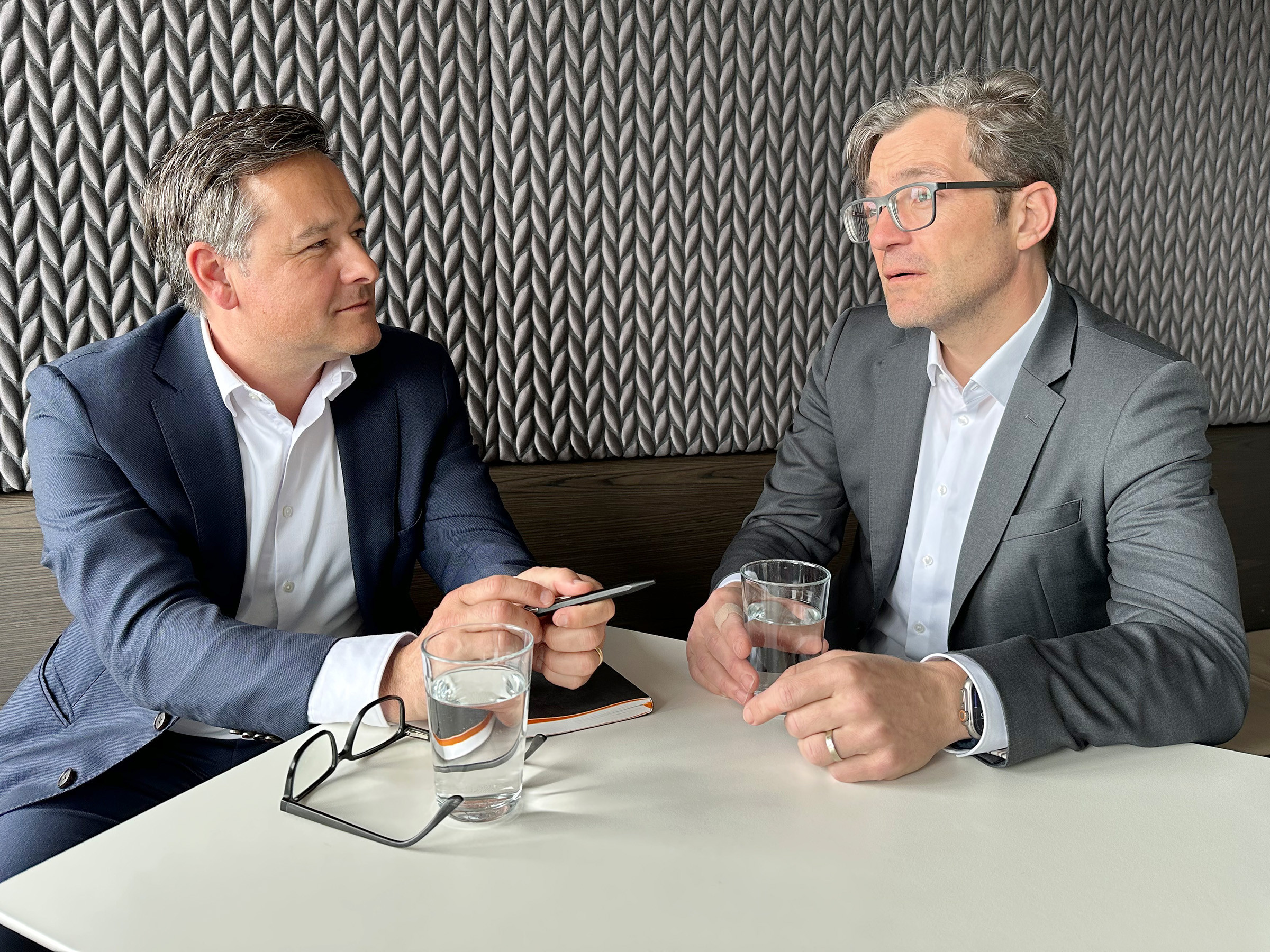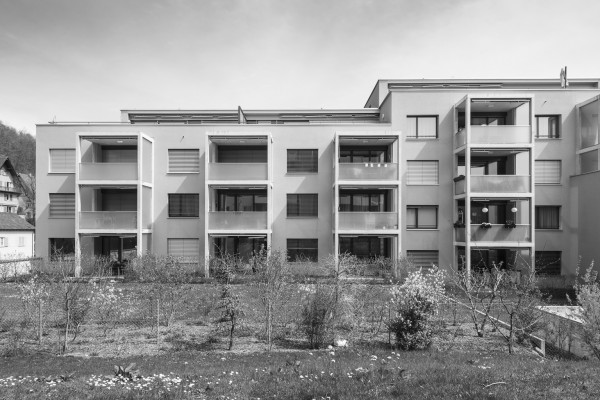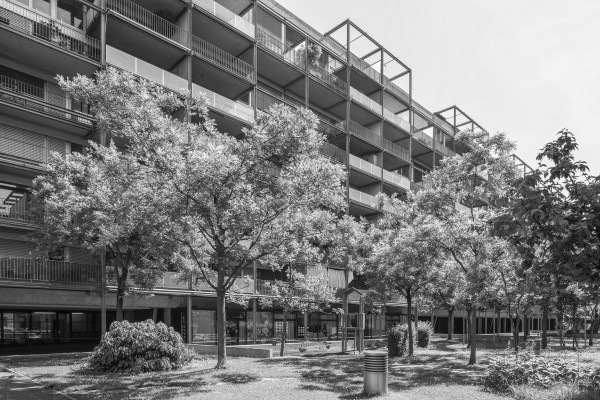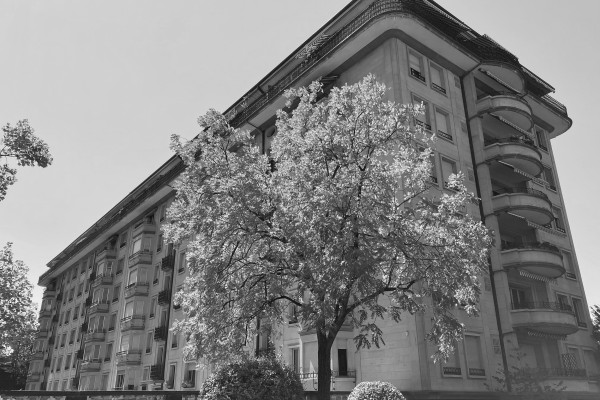
“What matters is the quality and performance of the chosen investment vehicle”
Back to overviewPension funds with direct real estate holdings are increasingly under pressure, with a lack of diversification, inefficiencies and regulatory complexity all making the management of the holdings more difficult. Marco Böhi and Rolf Kohler explain why a non-cash contribution can be an effective answer to these challenges – and which aspects require particular attention.
 Rolf Kohler, Head of Investment Sales and Marco Böhi, Head of Real Estate Switzerland.
Rolf Kohler, Head of Investment Sales and Marco Böhi, Head of Real Estate Switzerland.
What are the typical challenges for pension funds holding direct real estate investments?
Marco Böhi: Many pension funds face similar challenges when it comes to direct real estate holdings. Portfolios often lack the requisite number of properties to allow for efficient management. At times, there are insufficient internal human resources to develop the properties or, for instance, to carry out sustainable renovations. Geographic concentration is another problem. Where real estate portfolios were built up over many years, they tend to lack diversification. What is more, the properties in the portfolio are often at a similar stage in their lifecycle. If refurbishment work is due at around the same time, a great deal of capital and construction management capacity is required.
What are the main advantages of non-cash contributions for pension funds?
Rolf Kohler: First of all, they help to reduce cluster risk: a small number of directly held properties equals a high concentration. Investing in a larger vehicle means that the real estate portfolio is more broadly diversified. In return for the contribution, the pension fund receives units in a professionally managed investment vehicle, resulting in additional flexibility and liquidity. The pension fund also gains access to an experienced real estate manager whilst seamlessly maintaining its existing real estate allocation.
Another aspect that comes into play when properties have been held for many years is of an emotional nature: with a non-cash contribution, the pension fund does not part with its properties, as would be the case with a traditional sale. Instead, its “children” join a larger group, where they remain in good hands and continue to be developed.
A non-cash contribution makes sense at any time, as it usually results in greater efficiency.
What would be the right time for a pension fund to consider a non-cash contribution?
Marco Böhi: A good time would be, for example, when staff changes and internal know-how is lost, or when the real estate strategy evolves. At such times, many pension funds come to the conclusion that an external partner is a better choice for managing and developing their properties. In our view, it takes a portfolio worth around CHF 500 million or more to ensure efficient management. With this in mind, a non-cash contribution makes sense at any time, as it usually results in greater efficiency.
Which vehicles are particularly suitable for a pension fund’s non-cash contribution?
Rolf Kohler: Essentially, a distinction is made between publicly traded vehicles, such as real estate stocks or funds, and vehicles that are not publicly traded, such as investment foundations. The latter are particularly well suited to the needs of pension funds. They offer tax advantages and co-determination rights and show significantly less volatility than stocks and funds. Investment foundations are managed by a board of trustees, often in conjunction with a specialised real estate committee, allowing investors to play an active role in the decision-making process.
Do all properties held by a pension fund qualify for non-cash contributions?
Marco Böhi: Generally speaking, yes — although the decisive factor is the investment strategy pursued by the target vehicle. Depending on the focus, some properties are better suited than others. As a rule, it is generally easier to contribute residential properties, as there are more such vehicles and demand is higher. If the properties are very specific, the choice of suitable vehicles is usually limited.
The right partner should have a proven track record in the field of non-cash contributions and be able to demonstrate a stable performance.
How do pension funds find the right partner for a non-cash contribution?
Rolf Kohler: A suitable partner should have a proven track record in the field of non-cash contributions and be able to demonstrate a stable performance. In addition, the investment and sustainability strategy of the vehicle should align with the pension fund’s objectives. Further key criteria for selecting a partner are a transparent contribution process and clear governance structures.
What would you say to pension funds fearing that a contribution in kind will prevent them from getting the maximum price for their properties?
Rolf Kohler: It is easy to see why they may have these concerns. However, it is the quality and performance of the chosen investment vehicle that determines the success of a non-cash contribution. If the pension fund stands to benefit in the long term, this benefit is significantly more relevant than the one-off contribution price.
How does a non-cash contribution work and what do pension funds have to consider?
Marco Böhi: The non-cash contribution process is similar to a traditional real estate transaction. Negotiations take place between seller and buyer. The key difference is that both parties are aiming for a long-term partnership rather than a one-time deal. This perspective also affects the implementation of the transaction.
Why should a pension fund choose the Avadis Investment Foundation to make a non-cash contribution?
Rolf Kohler: Avadis has a wealth of experience in handling non-cash contributions and has successfully implemented transactions worth several billion Swiss francs. We are on hand to advise the contributing pension fund throughout the entire process. Our three real estate investment groups stand out for their stable performance, low costs and high-quality properties in prime locations.
What trends do you perceive in the market that could make non-cash contributions even more attractive for pension funds in the future?
Marco Böhi: There is a clear trend towards stricter regulatory requirements, and the importance of sustainability criteria in real estate investments continues to grow. In addition, many cantons have introduced increasingly complex legislation, which makes it more difficult for pension funds to efficiently manage real estate on their own. All of this makes working with professional partners more appealing – and increases the attractiveness of non-cash contributions.
Benefit from the Avadis Investment Foundation’s non-cash contribution scheme
The Avadis Investment Foundation manages assets worth CHF 4.7 billion in the Swiss real estate sector, split across three investment groups. The groups stand out for their stable performance, low costs and high-quality locations and properties. Non-cash contributions can be made to any of the vehicles.



